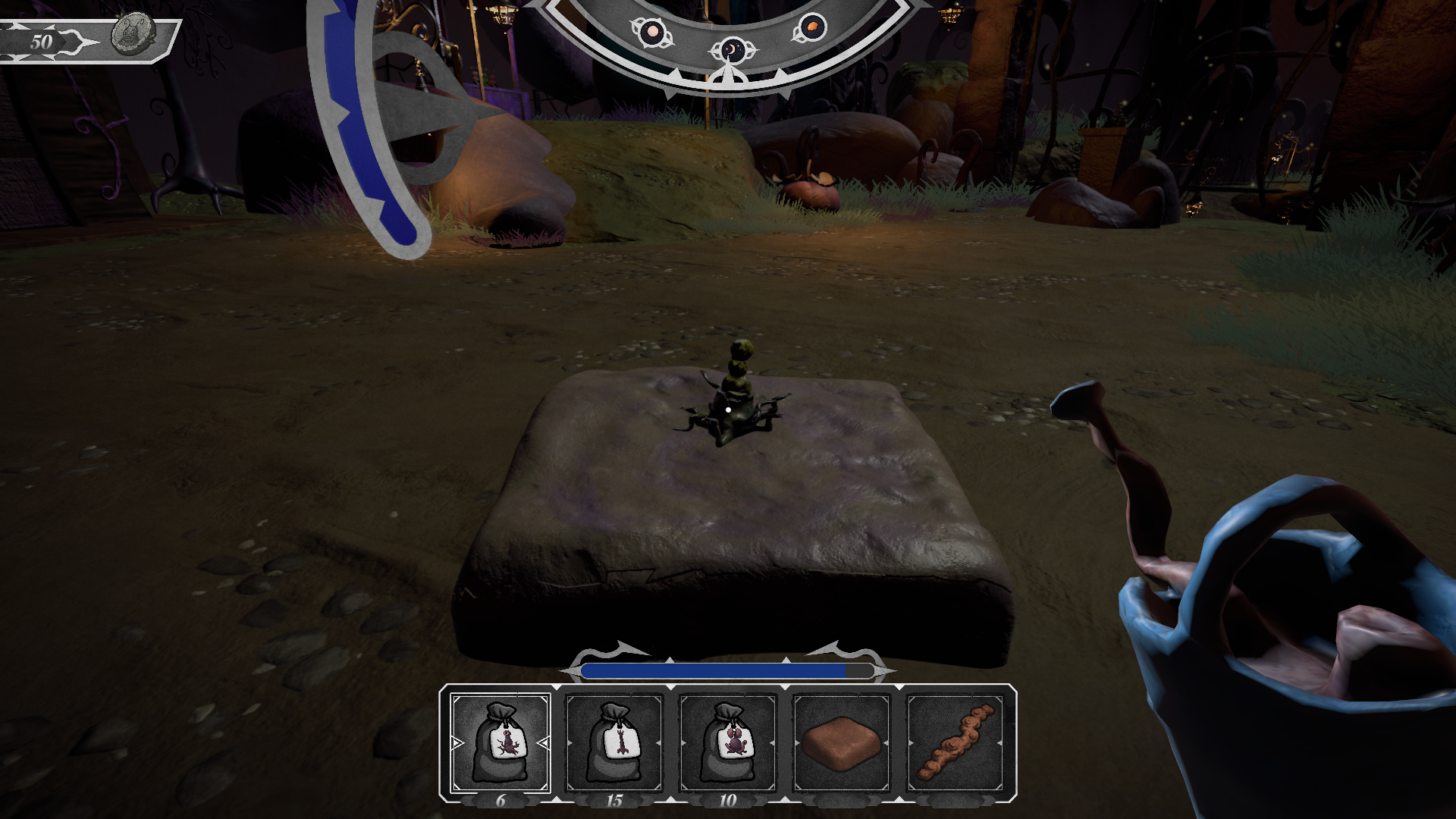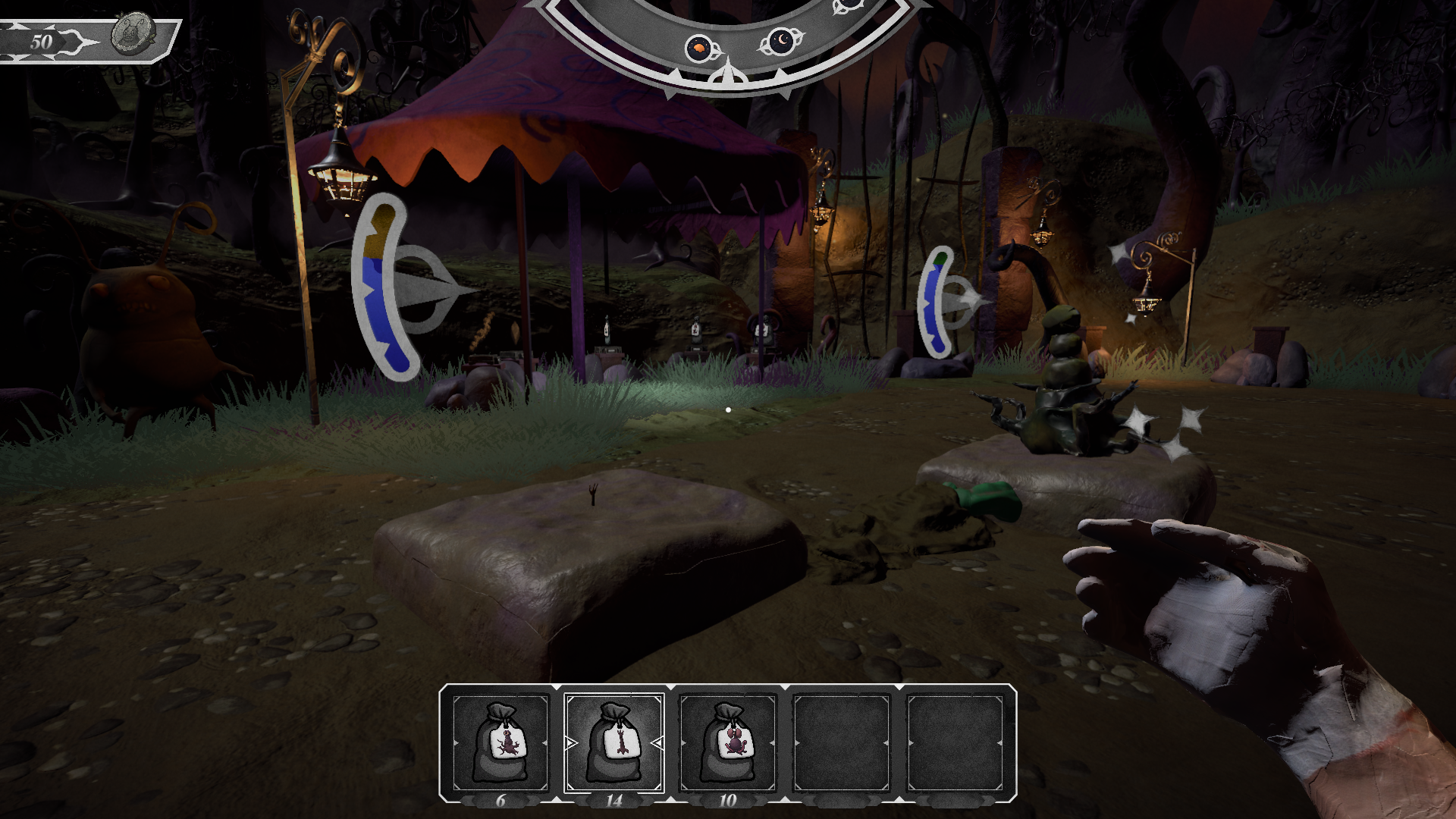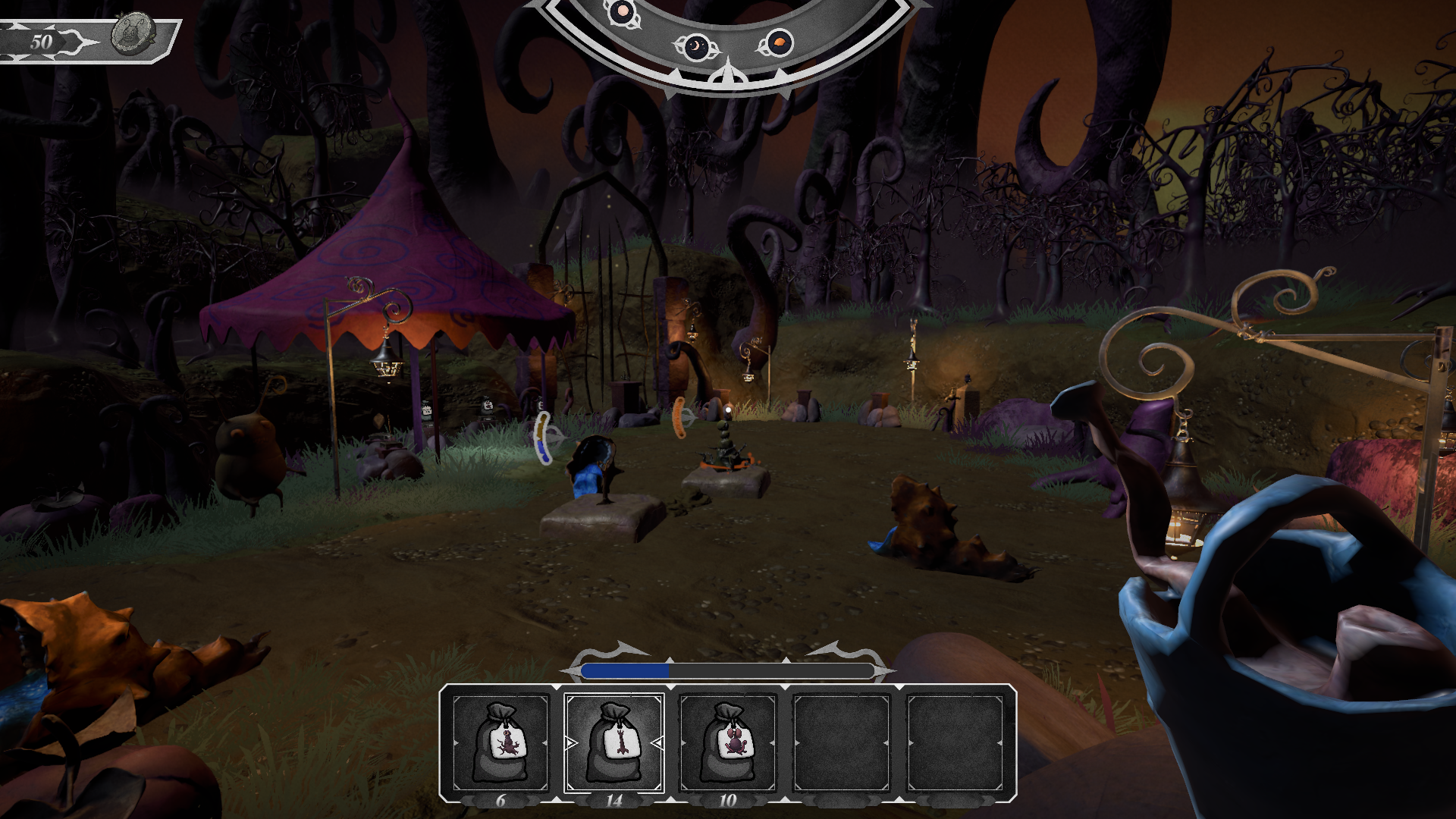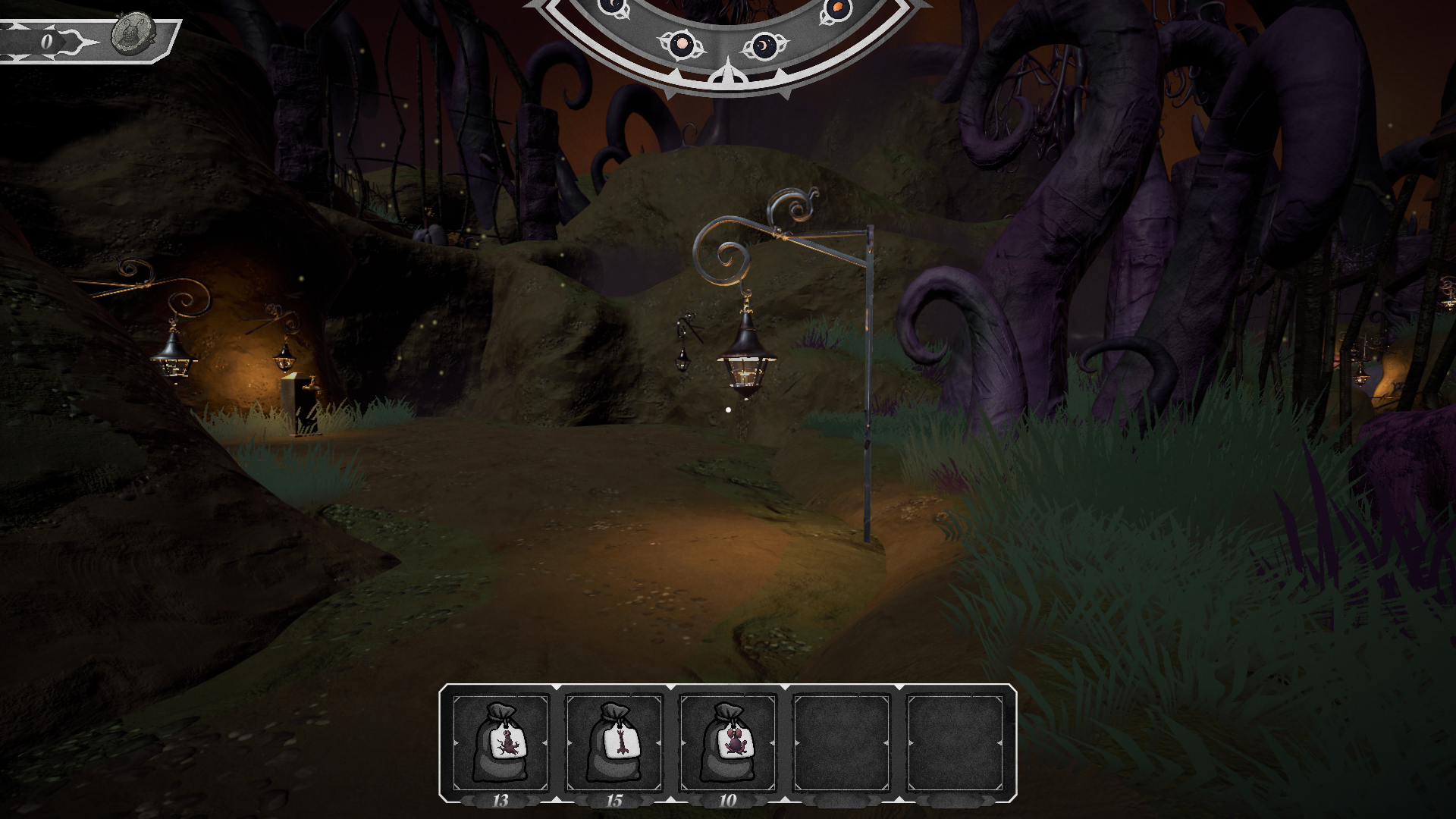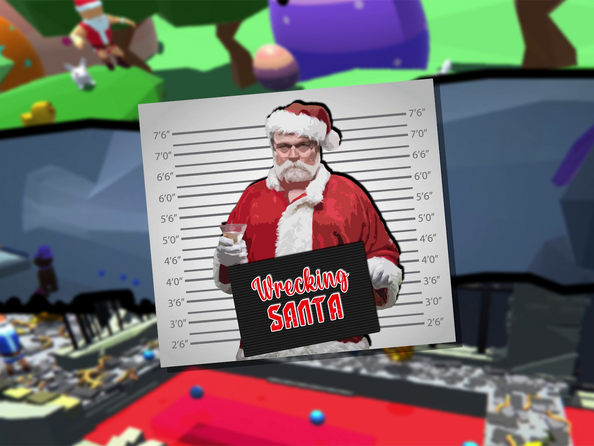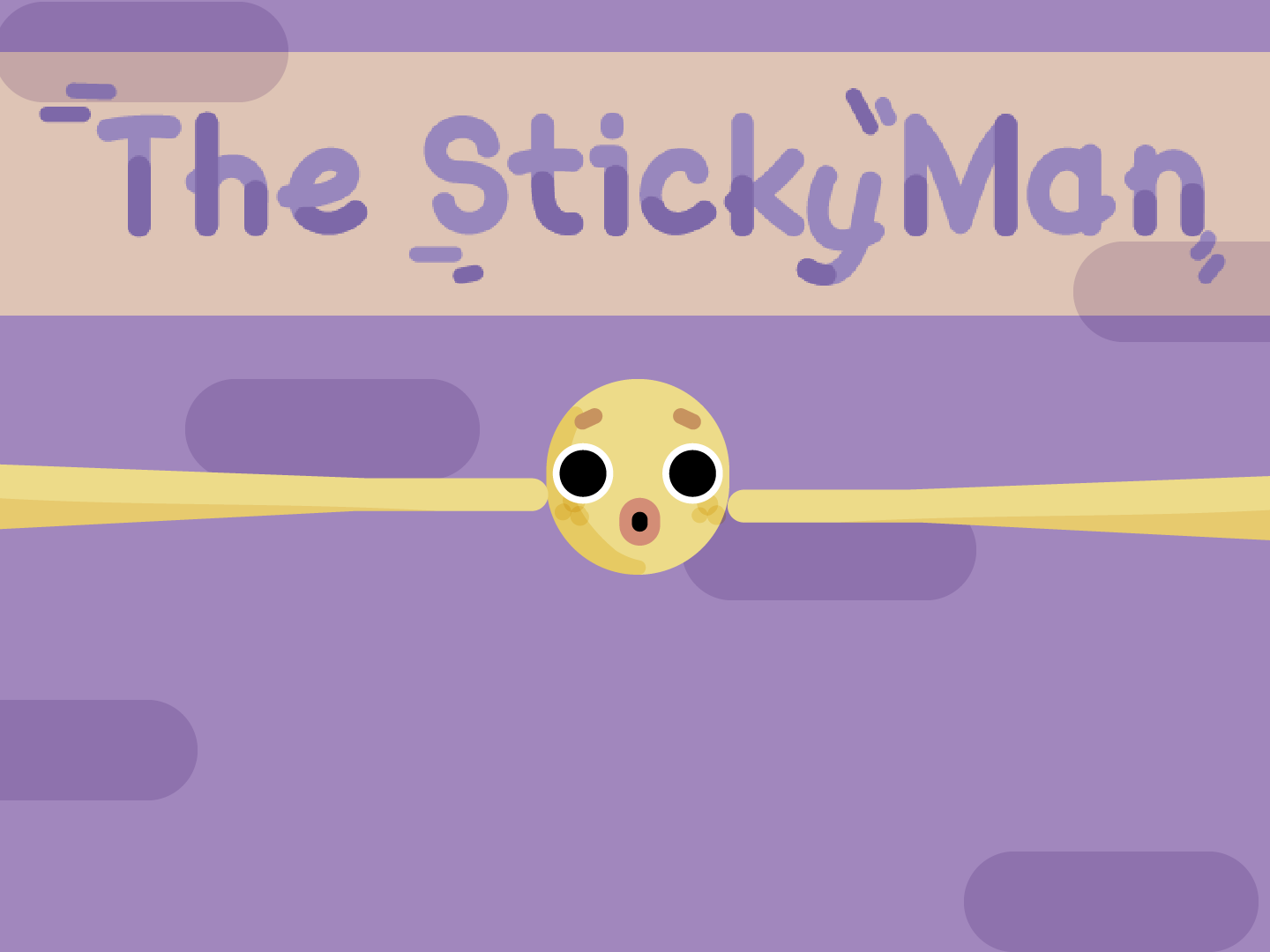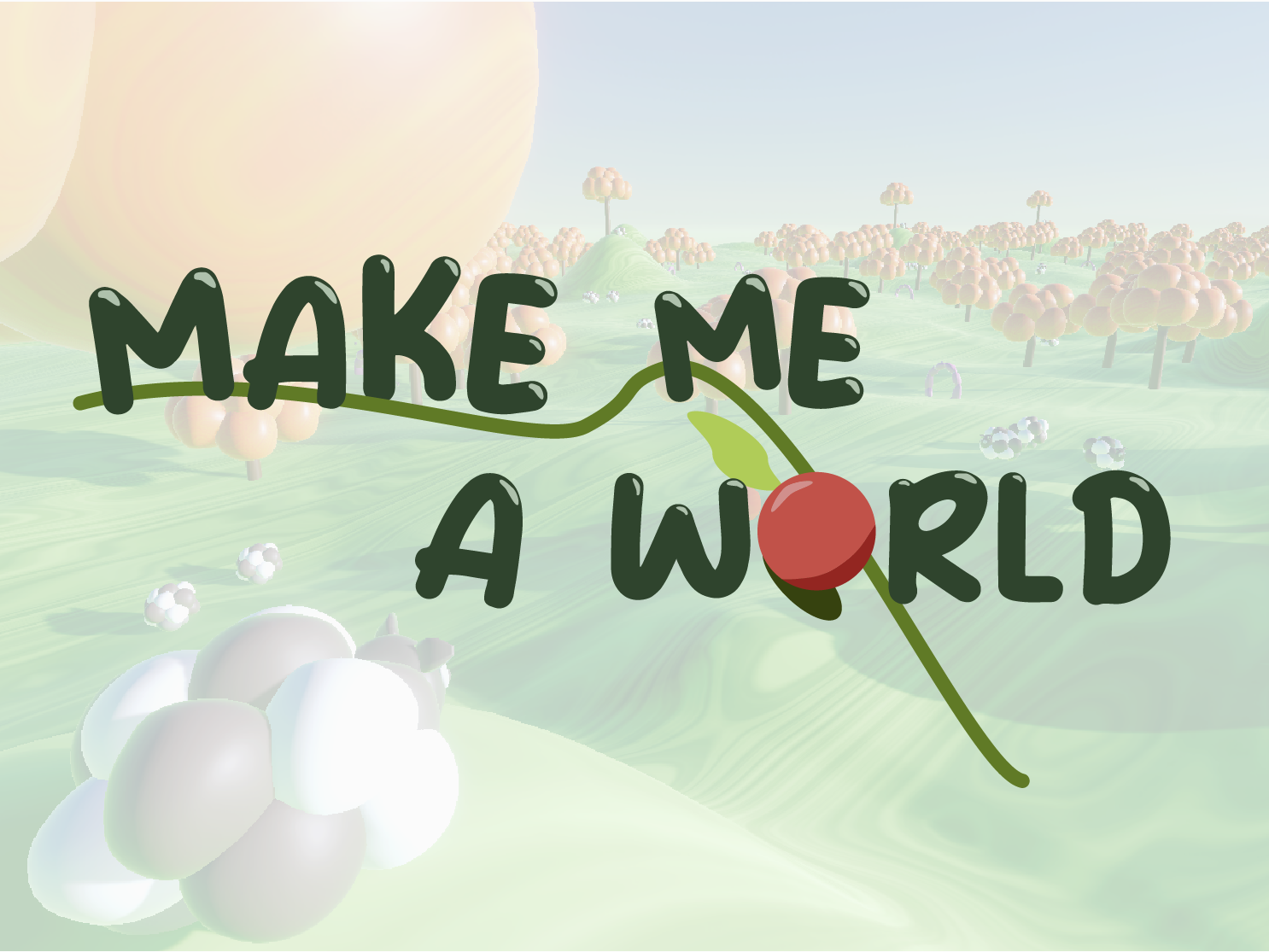Spindle Garden is a cozy first-person gardening game where you grow strange little creatures called Gorguis by combining different heads, bodies, and feet. Each part changes how the creature looks and behaves. You explore a beautiful, layered world made of interconnected zones, unlock new areas, and slowly shape your own ecosystem. The fun comes from experimenting, watching things evolve, and finding clever ways to make your favorite Gorguis thrive. It’s a peaceful, creative game that invites you to take your time and see what grows.
My roles in the development :
Project Manager : Group work organization using Agile methodology, scheduling organization, Brainstorming facilitation, and ensuring communication within the team.
Game Designer : Documentation, Gameplay Design, Brainstorming, Design 3Cs and RGD (Rational Game Design).
Lead 3D Game Art : 3D Modeling, Texturing, Rigging, Animations, Photogrammetry.
QA Testing : Creation of test protocols, QA testing, bug reporting, and reports writing .
*Documentation in French only
**La charte Technique, Sonore, Level Design et certaines parties de la charte graphique ont été écrites par Eliott Blacha, Onyx Nardon, Marcel Gabbardo, Lorenza Levy et Hadrien Verrecchia.
My Role as Game Producer on Spindle Garden
During the development of Spindle Garden, my role as Game Producer was central to ensuring the project moved forward smoothly, on time, and with a shared vision across the entire team. In a production context that balanced creative ambition and academic constraints, I worked to keep everyone aligned, motivated, and productive while respecting the overall direction of the game.
Sprint Planning & Project Management
One of my core responsibilities was structuring the project using an Agile-inspired approach, divided into 21 weekly sprints. Every Tuesday, I led our sprint meetings, where we reviewed the current state of the game, discussed blockers, shared feedback from playtests, and adjusted the objectives for the week. This allowed the team to move iteratively, while keeping long-term goals in focus.
We used Notion as our central production tool, not only to track tasks through a Kanban board, but also to store sprint calendars, weekly reports, design documentation, and bug lists. I was responsible for maintaining this space, ensuring all information remained up-to-date and accessible to everyone. This digital workspace was essential for asynchronous communication and for keeping production transparent and accountable.
Cross-Team Coordination
As Producer, I worked across all disciplines, Game Design, Programming, Art, Sound, and Narrative, to synchronize efforts and avoid bottlenecks. This meant constantly checking in with team members to anticipate dependencies, adapting schedules based on progress, and making sure that decisions made in one area were communicated clearly to others.
I also helped translate creative ideas into actionable tasks, breaking down complex goals into manageable steps. Whether it was refining the implementation of a new mechanic or adjusting a feature based on feedback, I ensured that each team had what they needed to move forward.
Task Prioritization & Problem Solving
A significant part of my role involved prioritizing features in a way that served both the game’s vision and our development timeline. With limited time and resources, I had to constantly balance ambition and feasibility — asking the right questions: “Is this essential to the player experience?”, “Can this be polished in time?”, “What’s the minimum viable version of this system?”
When challenges or blockers arose (technical issues, delays, uncertainty in design direction), I worked with the team to find quick, creative solutions without compromising the integrity of the project.
Vision Tracking & Long-Term Planning
Beyond the week-to-week rhythm, I also kept a close eye on the overall structure of the project. I helped build and update our macro roadmap, defined production milestones, and coordinated major shifts — like the evolution from a toy-like prototype into a structured, objective-driven experience.
My goal was always to preserve the team’s creative vision while also turning it into a deliverable, playable, and presentable game by the end of our production cycle.
My Role as Game Designer on Spindle Garden
As a Game Designer on Spindle Garden, I was responsible for shaping the player experience, from core mechanics to systemic depth and progression. My goal was to craft a game that felt both alive and strategic, where players could express themselves through experimentation, while still being challenged to master complex systems.
Designing the Core Systems
The heart of Spindle Garden lies in the propagation and hybridation systems. I conceptualized and balanced the way Gorguis (our modular plant-creatures) grow, spread, and evolve. Each Gorgui is composed of three parts, head, body, and feet, each affecting gameplay in unique ways (such as water needs, propagation rate, or fruit value).
I designed the rules of propagation: Gorguis only spread once mature, and do so through connected cells. I also created the hybridation system, where traits from parent Gorguis combine semi-randomly, and introduced fertilizers to let players manipulate which traits are passed down. Every choice, from where a Gorgui is planted to how the player manages its upkeep, impacts the garden’s long-term evolution.
Building Systems That Interact
One of my main design goals was to ensure every system was interconnected. Watering, propagation, hybridation, enemy management, commands, and upgrades all influence each other. I designed these systems to allow for emergent gameplay, the player discovers complex behaviors through experimentation, not tutorials.
For example, hybrid traits aren’t just cosmetic: they influence gameplay. Some heads are worth more money, some bodies consume more water, some feet propagate faster. This makes every choice meaningful. The player isn’t just reacting, they’re actively shaping a living system.
Progression & Player Agency
As the game evolved from a “sandbox toy” into a more structured experience, I worked on building a clear progression structure. Each zone has its own layout, water sources, and access rules. The player unlocks new areas by fulfilling specific planting requirements — turning gardening into a light form of puzzle-solving.
I also introduced client orders to give rhythm and optional direction to the player. These NPC requests guide gameplay without limiting creativity. Players can follow the economy, or ignore it to focus on completing their Grimoire of discovered hybrids.
Freedom, control, and discovery became our three gameplay pillars, and I structured every mechanic around those themes.
Prototyping & Balancing
Throughout development, I led playtest sessions, gathered feedback, and rebalanced many aspects of the game: propagation rates, Gorgui lifespan, hybridation odds, water costs, etc. I iterated constantly to ensure the pacing felt satisfying — not too rushed, not too slow.
I also collaborated with the programming team to define implementation-ready systems and worked closely with art to ensure that mechanics remained visually legible and expressive.
